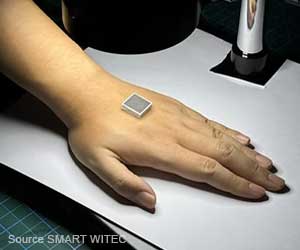The prosthetic arm was built using pulley mechanisms, artificial joint capsules, crocheted ligaments and tendons and is bio mimetic.

TOP INSIGHT
Controlled with a waldo remote manipulator the robotic hand is able to very closely mimic a wide variety of grasps.
First, a human skeleton hand was scanned and then 3D-printed artificial bones to match, which allowed them to duplicate the unfixed joint axes that we have.
Joint ligaments were made with strings, tendons with laser-cut rubber sheets which is a complex webbed multi-layered structure that wraps around the fingers to help manage flexibility and torque.
Controlled with a waldo remote manipulator the robotic hand is able to very closely mimic a wide variety of grasps. Users can also perform complicated in-hand manipulation without force feedback, which the researchers attribute to the kinematics of their hand so closely matching that of a real human hand.
 MEDINDIA
MEDINDIA




 Email
Email



